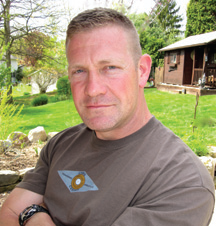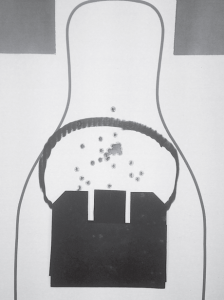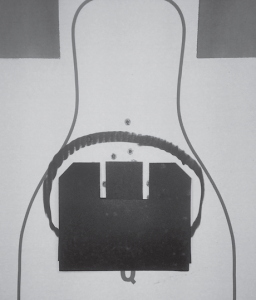by Chris Cerino
Cerino Training Group had a busy year in 2013. We started early, long before any guarantee of kind weather, then pressed on late into the cold, wet, snowy days of fall. Anyone who has trained with me before knows that my presentation is always similar but rarely the same. As classes go on, I do my best to keep notes of what works and what just isn’t cutting it in my programs.
A constant state of flux is how you could best describe my course lessons.
Not a “flavor of the day” trainer, it’s never anything major, just constant, little enhancements. A constant quest to be able to say the same thing in five or ten different ways! Being an instructor and educator for more than a decade, I know that not everyone learns the same way, at the same pace or even from hearing the same words.
Having a variety of ways to get a student to understand my final intentions is critical. Women learn different from men, civilians different from law enforcement and then there are those that are just a head case.
I can say “head case” because I once was one and still am at times. Contrary to popular belief, I’m not a natural at shooting. At times I may make it look easy but in my mind I am working my butt off trying to put it all together. Undoubtedly a “head case,” it took me a long time to learn the fundamentals of sight alignment, sight picture and follow-through.
The search for new instructional methods brought a slick trick a couple years ago. An instructor at a session in Bend, OR, had taken the hard, thin plastic bottom out of a gym bag to trace large sights similar to those on any handgun. He cut them out separately so they could be used as a visual training aid.
There are three ways we learn new information and often it’s a combination of two or even all three that is necessary.
The auditory learner: This person learns from hearing. A good example is listening to a lecture.
The visual learner: This person learns best from seeing; watching an instructional video.
The kinesthetic learner: This person learns by doing; hands on, actual touching and creating.
My own learning is often limited by the way a topic is presented. I am a combination of all three with emphasis on kinesthetic. I learn best by doing.
Back to those plastic, cut out sights.
We can talk all day long about what sight alignment is, how it should look and what is acceptable based on a given target size, but I’ve found that it’s just not enough. The cutouts help me better explain this by acting as a strong visual aid which not only can be shown but, passed around to students for “kinesthetic and visual” learning.
I used to talk about placing properly aligned sights on the target where you would want the bullets to impact.
Recently we had a “head case” in class and needed to find a better way. All the talk about sight alignment and sight picture just wasn’t enough.
Getting them to understand followthrough and trying to keep them from wanting to see the bullet holes and the target.
Recently I have started telling people to make the picture (see inset) and then shoot that picture. No matter what the distance just make this picture and press the trigger, maintaining that picture until the gun goes off and then make that picture again.
This is how a group forms. By doing the same thing over and over again! Same sight alignment, sight picture, trigger press and follow-through! This worked for not only this student but for many others, including myself. Make the picture. Shoot the picture. Simple enough! With this new mantra I find myself every so often looking over the sight and seeing my bullet holes. When that happens, I know I have changed the picture and that my target will start to present low hits. It’s then that I remind myself, “Make the picture, shoot the picture.” My shooting has improved this past season because of it and so has that of many others by their own acclaim.
My method for training has always been tell, show, do. Tell them what you want them to do. Show them what you want them to do and then have them do it. I wish I could claim all the glory for shooting the picture but it was a student who said, “Hey, can you show me that picture again?” as I was showing sight pictures by placing those plastic sights on the target. By doing this I show them exactly what it is I see when I shoot. It immediately became, “Make the picture, shoot the picture.” I can talk till I am blue in the face, but ultimately I get better results if I can incorporate visual and kinesthetic training methods.
It’s all about the fundamentals!

About the author: Chris Cerino is a nationally known firearms instructor and competitor who’s been training law enforcement officers and military for more than 12 years. He has worked in peace keeping positions for municipal, county, state and federal agencies spanning more than 20 years. Literally immersed in pistol training for years his skills are founded in life experience. Chris is the director of training for Chris Cerino Training Group LLC, teaching in a “do as I do” fashion. You can contact Chris by email: chris@ceriniotraininggrouup.com, or phone: 330-608-6415.




